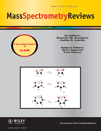
MASS SPECTROMETRY REVIEWS
Scope & Guideline
Transforming Knowledge in Mass Spectrometry
Introduction
Aims and Scopes
- Proteomics and Protein Analysis:
The journal consistently publishes research on advanced proteomics techniques, including targeted and untargeted methods for protein characterization, post-translational modifications, and interactions, highlighting the importance of mass spectrometry in understanding complex biological systems. - Metabolomics and Lipidomics:
A key focus area is the application of mass spectrometry in metabolomics, which involves the comprehensive analysis of metabolites in biological samples. This includes the study of lipids, their roles in health and disease, and the development of methods for quantifying metabolites. - Mass Spectrometry Imaging and Spatial Analysis:
Recent publications have shown an increasing interest in mass spectrometry imaging techniques, which allow for the spatial distribution of biomolecules to be visualized in tissues, providing insights into disease mechanisms and drug delivery. - Methodological Innovations:
The journal emphasizes advancements in mass spectrometry methodologies, including novel ionization techniques, hyphenated techniques (e.g., LC-MS), and improvements in resolution and sensitivity, which are crucial for enhancing analytical capabilities. - Environmental and Clinical Applications:
There is a notable interest in the application of mass spectrometry in environmental analysis and clinical diagnostics, including the detection of pollutants and the characterization of biomarkers for various diseases.
Trending and Emerging
- Integration of Machine Learning and AI:
The application of machine learning techniques to enhance data analysis in mass spectrometry is gaining traction. This trend highlights the potential for AI to improve the interpretation of complex datasets, making it a significant area of future research. - Single-Cell and Spatial Omics:
Recent publications emphasize the importance of mass spectrometry in single-cell analysis and spatial omics, reflecting a growing interest in understanding heterogeneity within biological systems and the spatial context of molecular interactions. - Advancements in Clinical Applications:
There is a noticeable increase in studies focusing on the clinical applications of mass spectrometry, particularly in the diagnosis and monitoring of diseases, including cancer and infectious diseases, indicating a shift towards translational research. - Innovations in Sample Preparation and Analysis Techniques:
New methodologies for sample preparation and analysis are emerging, such as ambient ionization techniques and improved separation methods, which are crucial for enhancing sensitivity and specificity in mass spectrometry applications. - Research on Nucleic Acids and Their Modifications:
The analysis of nucleic acids, including their modifications and roles in cellular processes, is becoming a prominent theme, reflecting the importance of mass spectrometry in advancing our understanding of genetics and molecular biology.
Declining or Waning
- Basic Theoretical Studies in Mass Spectrometry:
There seems to be a reduction in publications focused purely on theoretical aspects of mass spectrometry, such as fundamental ion chemistry and gas-phase reactions, as the field increasingly prioritizes applied research with direct clinical or practical relevance. - Historical Perspectives and Personal Reminiscences:
Although personal reflections and historical accounts of mass spectrometry pioneers have been featured, the frequency of such publications appears to be decreasing, possibly as the focus shifts towards more contemporary and forward-looking research. - Environmental Mass Spectrometry Studies:
While environmental applications still hold relevance, there appears to be a decline in the volume of studies specifically dedicated to environmental mass spectrometry, suggesting that this niche is becoming less of a focal point in the broader landscape of mass spectrometry research.
Similar Journals
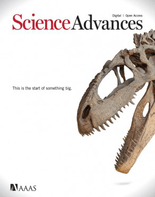
Science Advances
Pioneering Insights for a Brighter Scientific FutureScience Advances, published by the American Association for the Advancement of Science, is a leading open-access journal in the field of multidisciplinary sciences. Since its inception in 2015, it has rapidly gained prominence, achieving a remarkable Q1 ranking in both Medicine (miscellaneous) and Multidisciplinary categories, underlining its impact and relevance in contemporary research. With an impressive Scopus ranking of #7 out of 171 in the Multidisciplinary field, it proudly sits in the 96th percentile, showcasing its dedication to disseminating high-quality research across various scientific domains. This journal not only provides open access to innovative findings but also aims to foster collaboration and maintain a high standard of scholarly communication among researchers, professionals, and students globally. Stay updated with some of the most groundbreaking advancements and contribute to the collective pursuit of scientific knowledge through Science Advances.

Molecular Omics
Exploring the Frontiers of Molecular BiologyMolecular Omics is a premier, peer-reviewed journal published by the Royal Society of Chemistry, focusing on the interdisciplinary field of molecular biology with significant implications for biochemistry and genetics. With an E-ISSN of 2515-4184, this journal has been dedicated to disseminating high-quality research since its inception in 2018, maintaining an impressive trajectory in academic contributions until 2024. Currently, it holds a Q2 quartile ranking in both Biochemistry and Genetics, alongside a Q3 ranking in Molecular Biology for 2023, highlighting its relevance and influence in these domains. The journal is accessible as an open access publication, promoting the widespread dissemination of groundbreaking research. As part of a vibrant academic community, Molecular Omics aims to bridge fundamental and applied science, appealing to researchers, professionals, and students eager to expand their knowledge on molecular mechanisms and technologies that shape the future of biological research.
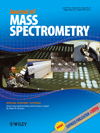
JOURNAL OF MASS SPECTROMETRY
Illuminating the Path of Analytical ExcellenceThe Journal of Mass Spectrometry, published by Wiley, is a vital resource for researchers and professionals in the fields of chemistry and medicine. With an ISSN of 1076-5174 and an E-ISSN of 1096-9888, this journal specializes in the latest advancements in mass spectrometry, an essential analytical tool used in various applications including drug development, environmental monitoring, and biological research. Positioned in the Q3 quartile for both Medicine (miscellaneous) and Spectroscopy categories in 2023, the journal stands out for its commitment to disseminating high-quality research findings. Its Scopus ranking places it at 36th in the field of Chemistry _ Spectroscopy, within the 53rd percentile, reflecting its growing impact and relevance. Researchers are encouraged to submit their work and explore cutting-edge articles published between 1995 and 2024. Despite its non-open access model, the journal remains accessible through various academic platforms, fostering a rich exchange of knowledge among scientists worldwide.
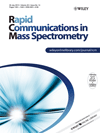
RAPID COMMUNICATIONS IN MASS SPECTROMETRY
Advancing the frontiers of mass spectrometry research.RAPID COMMUNICATIONS IN MASS SPECTROMETRY is a leading journal published by Wiley, focusing on the rapidly evolving field of mass spectrometry and its applications across various domains, including analytical, organic, and spectroscopy chemistry. With its ISSN 0951-4198 and an E-ISSN of 1097-0231, the journal has firmly established itself as a reputable source of innovative research since its inception in 1987, and is set to continue until 2024. As evidenced by its 2023 Scopus rankings, the journal occupies a solid position in the realms of analytical chemistry (Q3), organic chemistry (Q3), and spectroscopy (Q3), reflecting its impact among a diverse audience of researchers and professionals. Although it is not an open-access publication, the findings shared within its pages are pivotal for advancing knowledge and practical applications in mass spectrometry, making it an essential resource for students and experts aiming to stay abreast of the latest scientific developments.

CHINESE JOURNAL OF ANALYTICAL CHEMISTRY
Advancing Analytical Excellence in ChemistryCHINESE JOURNAL OF ANALYTICAL CHEMISTRY, published by SCIENCE PRESS in China, stands as a prominent platform in the field of analytical chemistry since its inception in 1989. With its ISSN 0253-3820 and E-ISSN 1872-2040, the journal maintains a vital role in disseminating empirical research and innovative methodologies, contributing to the advancement of analytical techniques and their applications. The 2023 Scopus ranking positions the journal in the third quartile (Q3) within its category, reflecting a respectable standing among its peers. Researchers, professionals, and students alike engage with a broad range of topics, from instrumental analysis to environmental monitoring, each aiming to foster further scientific inquiry. Although it does not currently offer Open Access, the journal's rich repository of knowledge continues to be an essential resource for those in the analytical chemistry community, with an enduring commitment to scientific excellence and collaboration.
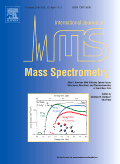
INTERNATIONAL JOURNAL OF MASS SPECTROMETRY
Bridging Theory and Practice in Mass Spectrometry ResearchINTERNATIONAL JOURNAL OF MASS SPECTROMETRY, published by Elsevier, is a pivotal platform in the field of mass spectrometry, advancing the understanding and application of this essential analytical technique. With an ISSN of 1387-3806 and an E-ISSN of 1873-2798, the journal has established its significance since its inception in 1998 and continues to contribute valuable insights to the scientific community through its convergence of knowledge extending to 2024. Its scope encompasses critical areas such as condensed matter physics, instrumentation, physical and theoretical chemistry, and spectroscopy, earning recognition across various ranks and quartiles, specifically holding a Q3 classification in multiple categories for 2023. Although it does not currently operate under an open access model, the journal remains an essential resource for researchers, professionals, and students striving to deepen their expertise and stay abreast of the latest methodological developments and discoveries in mass spectrometry. With its commitment to quality and innovation, the INTERNATIONAL JOURNAL OF MASS SPECTROMETRY plays a crucial role in supporting advancements in analytical chemistry and instrumental analysis.
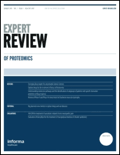
Expert Review of Proteomics
Transforming Proteomics Knowledge into Practical Applications.Expert Review of Proteomics, published by TAYLOR & FRANCIS LTD, is a distinguished journal that focuses on the latest advancements in the field of proteomics, a critical area within biochemistry and molecular biology. With an ISSN of 1478-9450 and E-ISSN 1744-8387, this journal has been pivotal in disseminating high-quality research from its inception in 2004 to its planned convergence in 2024. Its influential position is reflected in its 2023 rankings, placing it in the Q2 category for both Biochemistry and Molecular Biology, alongside respectable Scopus rankings that rank it 118th and 141st in its respective categories. Despite its non-open access structure, Expert Review of Proteomics provides researchers and professionals with a vital platform for critical reviews and insights into proteomic methodologies, thus contributing significantly to the global scientific community. By bridging theoretical research with practical applications, it serves as an essential resource for those dedicated to advancing their knowledge and expertise in this dynamic field.

Acta Chemica Iasi
Your Gateway to High-Quality Chemical ResearchActa Chemica Iasi is a distinguished open-access journal dedicated to advancing the field of chemistry, published by the esteemed ALEXANDRU IOAN CUZA UNIVERSITY PRESS located in Iasi, Romania. Since its inception, this journal has served as a vital platform for the dissemination of significant research findings, theoretical advancements, and methodological innovations in various chemistry disciplines. As an open-access publication since 2013, it provides unrestricted access to high-quality articles, fostering collaboration and knowledge sharing among researchers, professionals, and students globally. Although specific metrics such as H-Index and Scopus rankings may be forthcoming, the journal's commitment to rigor and excellence ensures that it remains an invaluable resource for those seeking to stay at the forefront of chemical research. With a focus on promoting scientific inquiry and innovation, Acta Chemica Iasi continues to uphold a legacy of scholarly excellence and contribution to the chemical sciences.

ANALYTICAL AND BIOANALYTICAL CHEMISTRY
Advancing the Frontiers of Chemical AnalysisANALYTICAL AND BIOANALYTICAL CHEMISTRY, published by SPRINGER HEIDELBERG, is a leading international journal that serves as a vital platform for innovative research in the fields of analytical and bioanalytical chemistry. With an impressive impact factor and ranking in the Q2 category for both Analytical Chemistry and Biochemistry, the journal highlights key advancements and methodologies that drive the discipline forward. Established in 1996 and continuing vigorously into 2024, it has gained significant recognition with Scopus rankings placing it in the 83rd and 78th percentiles within its categories, underscoring its impact and relevance. The journal's commitment to open access facilitates widespread dissemination of critical scientific knowledge, making it an essential resource for researchers, professionals, and students dedicated to exploring the complexities of chemical analysis. With its base in Heidelberg, Germany, ANALYTICAL AND BIOANALYTICAL CHEMISTRY continues to inspire and influence the global research community.

MOLECULAR & CELLULAR PROTEOMICS
Connecting researchers with cutting-edge proteomic discoveries.MOLECULAR & CELLULAR PROTEOMICS, published by Elsevier, stands as a premier journal in the fields of Biochemistry, Analytical Chemistry, and Molecular Biology, with a distinguished Q1 ranking reflecting its high impact and contribution to the scientific community. Established in 2002, this journal has consistently provided a platform for the latest research in protein science, merging molecular biology with advanced analytical techniques. With impressive Scopus rankings—41st in Biochemistry and 16th in Analytical Chemistry—it caters to an audience of researchers, professionals, and students eager to explore cutting-edge developments in proteomics. Although currently not designated as open access, the journal aims to foster knowledge dissemination through accessible research content. As it continues to evolve until 2024, MOLECULAR & CELLULAR PROTEOMICS is essential for anyone passionately engaged in the ever-expanding field of proteomics.